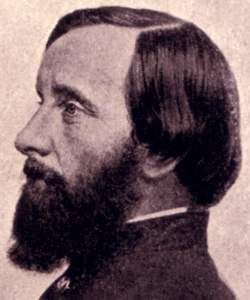Thomas Wentworth Higginson (American National Biography)
Scholarship
Radical action was central to Higginson's efforts. His unequivocal opposition to the fugitive slave law was evident as he participated in freeing fugitive slave Thomas Sims and participating in attacking the Boston Courthouse, where fugitive slave Anthony Burns was held. Recruiting and leading armed men to the Kansas territory after passage of the Kansas-Nebraska Act (1854), Higginson helped organize the Massachusetts Kansas Aid Committee, the militant arm of the Emigrant Aid Society. "A single day in Kansas," wrote Higginson from Lawrence, "makes the American Revolution more intelligible than all Sparks and Hildreth [historians; see Jared Sparks] can do." He praised "Old Captain John Brown . . . who has prayers every morning, and then sallies forth, with seven stalwart sons, wherever duty or danger calls, who swallows a Missourian whole and says grace after the meat" (Liberator, 16 Jan. 1857). In January 1857 he organized the Worcester Disunion Convention, which declared that abolition must be the primary goal: "peace or war is a secondary consideration" (Proceedings of the State Disunion Convention, Boston [1857], p. 18).
Higginson was one of the "Secret Six"--abolitionists who raised money for Brown's planned slave insurrection at Harpers Ferry, Virginia. Unlike some other radical abolitionists, he supported Lincoln's presidential candidacy. But his wife's poor health prevented him, at the war's outset, from joining the army. Instead, he became a man of letters, publishing frequently in the Atlantic Monthly.
Higginson was one of the "Secret Six"--abolitionists who raised money for Brown's planned slave insurrection at Harpers Ferry, Virginia. Unlike some other radical abolitionists, he supported Lincoln's presidential candidacy. But his wife's poor health prevented him, at the war's outset, from joining the army. Instead, he became a man of letters, publishing frequently in the Atlantic Monthly.
Tilden G. Edelstein, "Higginson, Thomas Wentworth," American National Biography Online, February 2000, http://www.anb.org/articles/15/15-00331.html.








